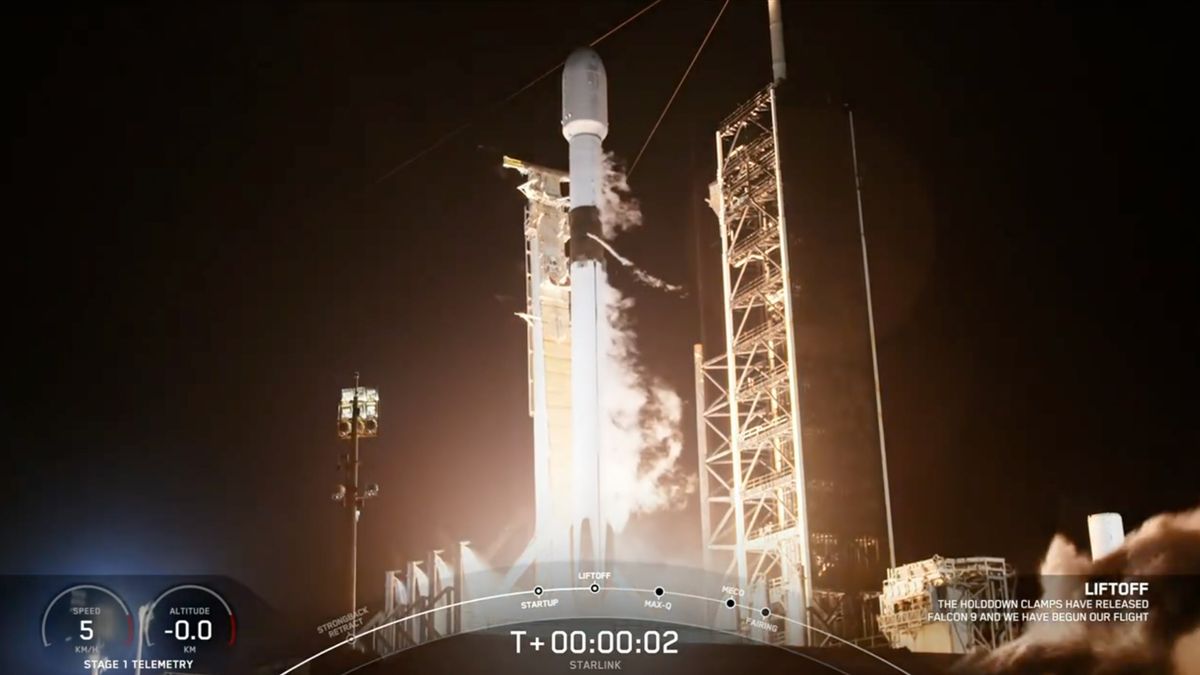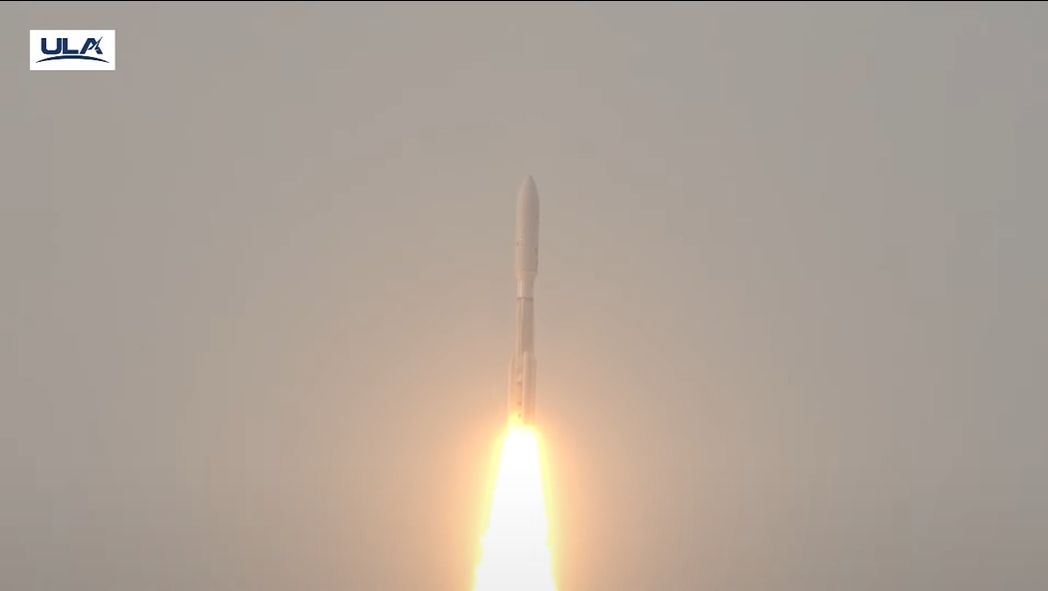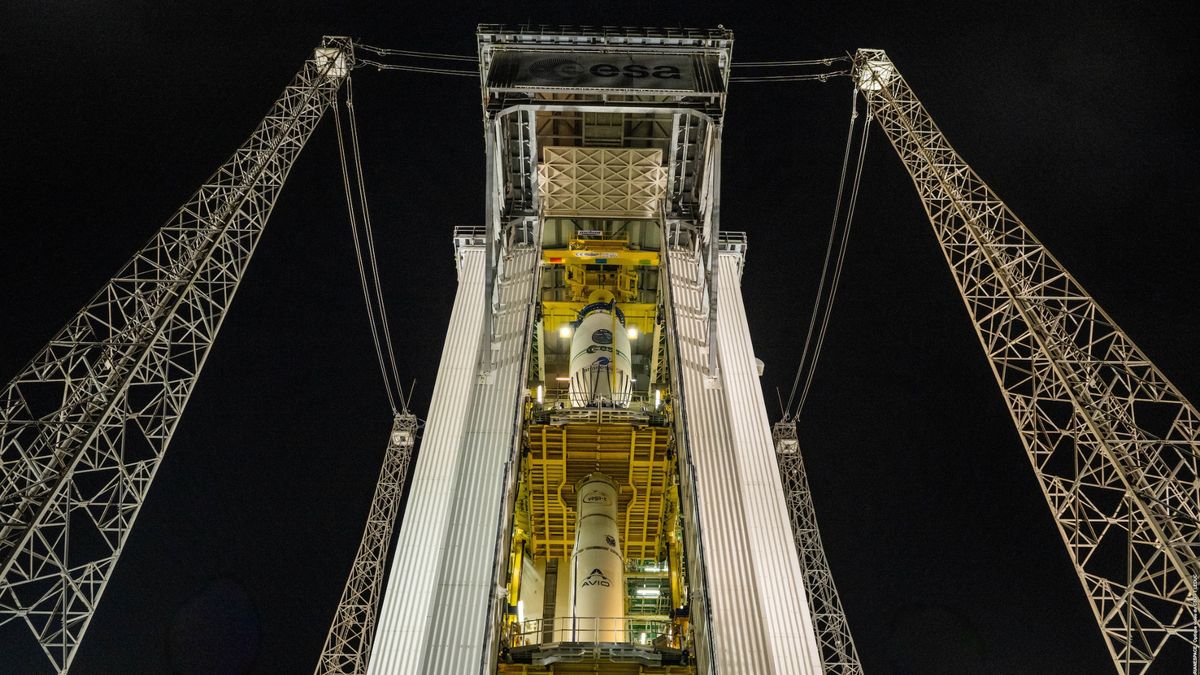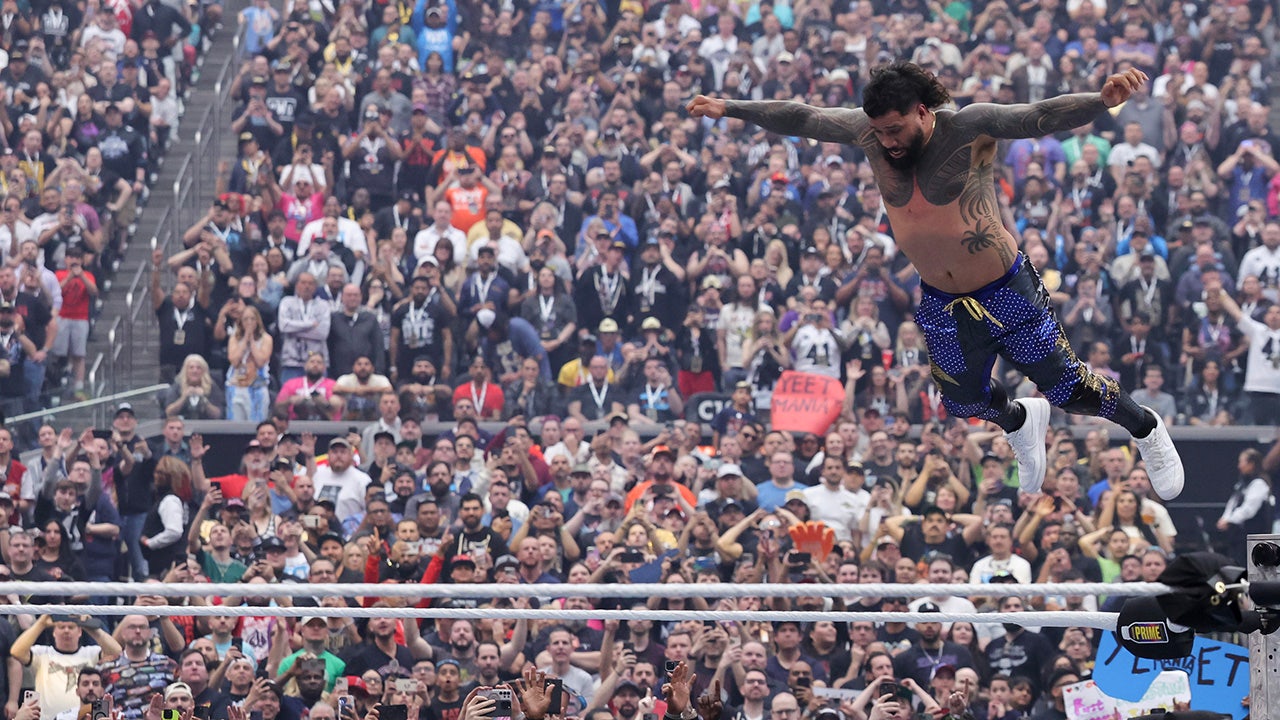A batch of Amazon satellites is hitching a ride to low-Earth orbit, marking the biggest stride yet in the tech giant’s efforts to join a race to blanket the planet in connectivity beamed from space.
Twenty-seven satellite took flight atop an Atlas V rocket, built by United Launch Alliance, just after 7 p.m. ET Monday from Cape Canaveral Space Force Station in Florida.
The launch kicks off the first installment for Amazon’s Project Kuiper, a plan to create a massive constellation of internet-beaming satellites. The effort is poised to compete directly with Starlink, the network offered by Elon Musk’s SpaceX that already has at least 4.6 million customers around the world.
Starlink and Project Kuiper are both part of an effort to transform global internet infrastructure. The networks aim to provide access to remote corners of the world where traditional broadband, which relies on underground cables, is lacking.
It’s an exceedingly complex endeavor because thousands of satellites, orbiting close to Earth and traveling more than 17,000 miles per hour (27,360 kilometers per hour), must work in tandem to seamlessly maintain connections with customers’ dishes and other ground-based infrastructure. While SpaceX has made enormous strides bringing its satellite constellation online, the financial outlook of the business is unclear because SpaceX is a privately held company.
Amazon’s analysts on Wall Street, meanwhile, are apprehensive about the company’s entrance into the market.
The big question is whether it’s too late for Amazon to take on SpaceX.
“Kuiper is going to have a long way to go to catch up to be able to serve a significant part of the market,” Craig Moffett, senior managing director at the research firm MoffettNathanson, told CNN. “It looks like there is a very, very high probability that this will turn out to be too late for it to ever come close to being an attractive investment.”
What’s at stake
A Project Kuiper customer terminal, the ground equipment that will be necessary for residential users to tap into the network, is pictured in this handout image from Amazon. - Amazon
The first iteration of Amazon’s Kuiper service will rely on a constellation of about 3,200 satellites.
Each satellite will orbit about 280 miles (450 kilometers) above Earth, which is slightly lower than the roughly 340-mile (550-kilometer) altitude at which SpaceX’s Starlink satellites operate.
Both Kuiper and Starlink satellites will operate in a region of space called low-Earth orbit, which is dramatically closer to our planet than where traditional communications satellites operate. For example, companies that have provided Wi-Fi to remote areas or in-flight service for airlines — such as London-based Inmarsat and Carlsbad, California-based Viasat — operate satellites in geosynchronous orbit, located some 22,236 miles (35,786 kilometers) from the ground.
At those altitudes, data takes significantly longer to reach customers. That gives low-flying satellites such as Starlink and Kuiper a significant advantage in terms of speed.
SpaceX has already parlayed its Starlink network for several purposes: The constellation connects individual homes and businesses in remote areas and provides connectivity for some airplanes, RVs and even astronauts traveling aboard orbital spacecraft.
It will be difficult for Amazon to attempt to chip away at SpaceX’s dominance, particularly early on in Kuiper’s deployment, as it will take time and money to expand the service, according to Moffett.
An expensive endeavor
Project Kuiper will require hundreds of ground gateways that will be part of the infrastructure necessary to underpin the system. - Amazon
Just setting up the first-generation Kuiper system of about 3,200 satellites could cost as much as $17 billion upfront, according to an October report from financial services company Raymond James.
And even if Amazon offsets those costs with revenue after releasing its service, Kuiper could still cost the company a whopping $1 billion to $2 billion per year, according to an April 21 report from Raymond James analyst Josh Beck.
For his part, Moffett does not believe Amazon’s calculus in competing with Starlink is sound. It’s likely too late for Amazon to cash in on the United States’ investments in expanding internet access, and Project Kuiper may give the tech giant all the downsides of operating a satellite megaconstellation without many of the benefits.
Geopolitical concerns
A Ukrainian serviceman stands next to a vehicle that carries a Starlink satellite internet system near the frontline, as Russia's attack on Ukraine continues, in Donetsk region, Ukraine February 27, 2023. - Lisi Niesner/Reuters
SpaceX CEO Elon Musk has already found himself embroiled in geopolitics in ways he has openly said he does not wish to be because of Starlink.
SpaceX has had to grapple, for example, with how and whether to provide services in war zones — and Musk has previously faced significant backlash over his comments about Ukraine.
As the face of Amazon, Jeff Bezos may be a welcome billionaire alternative to Musk on the international scene given Musk’s increasingly hard-line politics and participation in the current Trump administration.
“I certainly imagine that NATO and Ukraine are at least quietly dancing for joy about the idea of having someone other than Elon Musk in the position of providing capacity,” Moffett said.
Still, there are alternatives, such as London-based OneWeb, which is building its own satellite internet constellation. And for national security reasons, the European Union’s member nations and the United Kingdom may opt to bolster their own capabilities rather than relying on US-based services.
A small world
The Amazon Prime logo is displayed on the side of an Amazon delivery truck on June 21, 2023, in Richmond, California. - Justin Sullivan/Getty Images
Still, theoretically, Amazon’s Project Kuiper may have a globe full of potential customers.
And there could be signficant upsides for the company’s broader business, such as expanding the user base for Amazon Web Services and providing connectivity to the company’s fleets of shipping vehicles.
But a lot remains to be seen. Can Amazon compete with SpaceX on price? How long will it take to ramp up production of its satellites and begin scaling the constellation to blanket significant areas?
Amazon is expected to attempt to roll out its constellation fairly rapidly, with the first customers slated to begin using the network later this year, according to the company.
Rajeev Badyal, vice president of Project Kuiper at Amazon, has traditionally kept a very measured tone when talking about Kuiper’s potential.
In a statement about Monday’s launch, he noted this “will be the first time we’ve flown our final satellite design and the first time we’ve deployed so many satellites at once.”
“No matter how the mission unfolds, this is just the start of our journey, and we have all the pieces in place to learn and adapt as we prepare to launch again and again over the coming years,” Badyal said.
For more CNN news and newsletters create an account at CNN.com
.png)
 German (DE)
German (DE)  English (US)
English (US)  Spanish (ES)
Spanish (ES)  French (FR)
French (FR)  Hindi (IN)
Hindi (IN)  Italian (IT)
Italian (IT)  Russian (RU)
Russian (RU) 











Comments